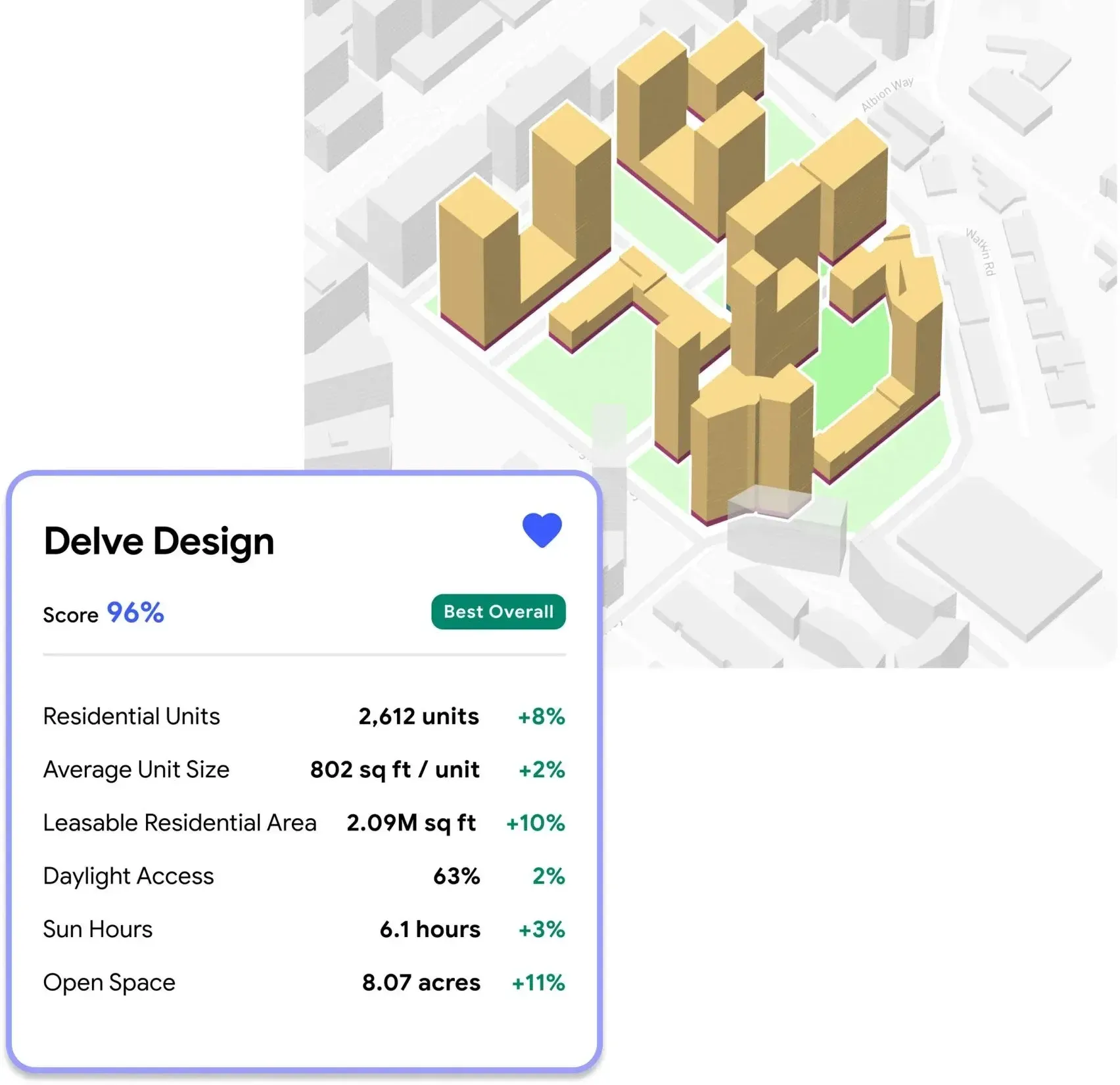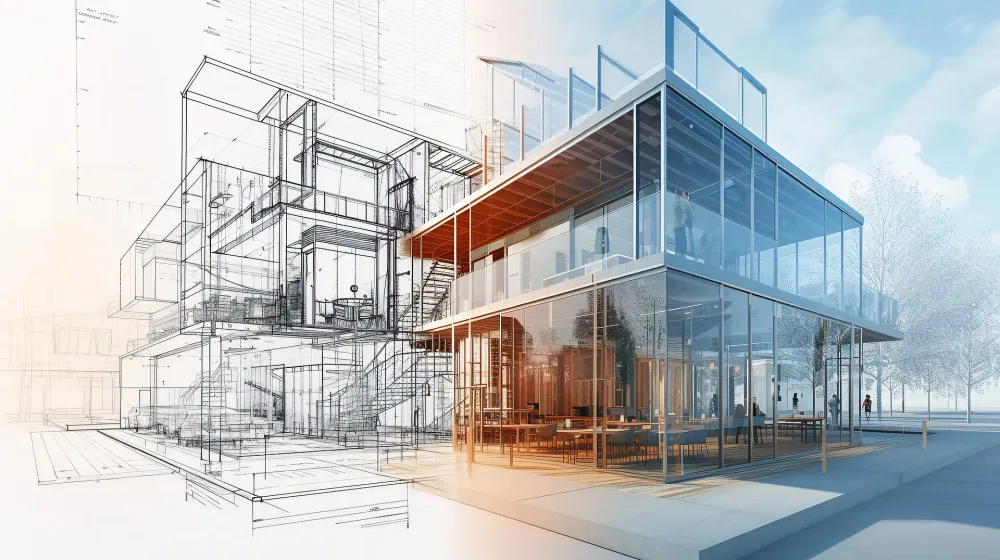Explore the 3 biggest AI trends reshaping UK property in 2025 - covering investment, design, and asset management. A must-read for forward-thinking professionals.
AI has entered the property world - not with robots laying bricks, but with tools that are quietly transforming how we design, build, manage, and invest in real estate.
And if 2024 was the year of hype, 2025 and beyond are shaping up to be the years of practical application.
From investment firms using AI to anticipate market trends, to property managers automating entire portfolios, the shift is already underway. And while the UK is cautiously entering the AI era, the US has already advanced significantly, using AI in design, construction, investment and everything in between.
These aren’t abstract ideas or speculative tech. These are tools in use today. Here are three key trends property professionals should be watching closely.
1. Generative Design & AI-Driven Feasibility
The early-stage design process is being fundamentally re-imagined. Generative design and AI powered feasibility tools are making it possible to go from a blank site to a viable concept in minutes instead of weeks.
'Delve' is a design tool which uses AI to generate multiple design options for urban developments in minutes
These tools can:
- Generate massing and layout options from a red line plan or aerial image.
- Factor in complex constraints like topography, daylight access, surrounding building heights, rights of light, overlooking distances, and local policy
- Compare feasibility options based on cost, density, carbon impact or unit mix
Short-term impact:
- Faster and smarter viability work
- Increased number of design options
- Concept plans better aligned with planning and policy frameworks
Long-term potential:
- AI generated options tailored to specific stakeholder goals (e.g. cost efficiency vs sustainability)
- Generate detailed drawing packages.
- Performance driven detailing - optimising: daylight levels, acoustic & thermal performance, embodied carbon. AI carrying out the bulk of the work involved in detailed design based work.
AI and generative design is being implemented right now on live projects.
- Examples of tools and softwares include: Bryden Wood’s automated layout engines, Delve by Sidewalk Labs, and tools like Archistar or LandInsight’s generative overlays.

What does this mean for the industry?
It means fewer wasted feasibility studies, fewer unviable designs, and better-informed conversations from day one. This unlocks a more agile, responsive approach to design and development.
For a deeper insight into how AI is transforming architecture & design see our latest article:
"Generative Design in Architecture: Faster Feasibility, Smarter Decisions"
2. AI-Enhanced Market Prediction
The idea that AI can forecast the property market may sound ambitious, but it’s already happening.
These systems don’t just review historical sales data. They integrate live streams of economic signals, demographic shifts, transport changes, planning permissions, infrastructure projects, and even behavioural patterns. The result? Forecasting models that are faster and more accurate than any traditional market report.
Short-term benefits:
- Dashboards that show emerging hotspots based on real-time transaction data and rental trends
- Investment tools that calculate risks based on historical planning outcomes or comparable developments
- Due diligence software that flags anomalies or inconsistencies in deals
Example scenario:
An investment firm identifies a rising suburban hotspot—not by gut feel, but by tracking a spike in things like - local planning activity, improved transport infrastructure, increased remote work commuting patterns, and school rating changes. Here's where it gets clever..
Using AI, the system analyses vast, multi-source datasets - spotting subtle correlations that human analysts couldn’t, allowing them to act before the market catches on.
In the US, platforms like Skyline AI (acquired by JLL) and Cherre are already being used to guide billion-dollar investment strategies. The UK isn’t far behind - but it needs implementation.
3. Smart Property Management: The Rise of Autonomous Buildings
“Autonomous buildings” sounds like a buzzword but the shift is very real and it's happening quietly.
AI is being embedded into building systems. The result? A rethinking of how properties are managed - particularly across multi-site portfolios and commercial developments.
AI is now being used to:
- Spot maintenance issues like HVAC failures, leaks, or power inefficiencies before they escalate
- Optimise energy use based on occupancy data, tenant behaviour and weather shifts.
- Generate operational dashboards that tracks live building performance.
- Improve tenant experience with AI assistants.
Short-term wins:
- Lower operating costs and significantly better energy efficiency
- Fewer emergency repairs, reduced downtime
- Faster, round-the-clock tenant communication
The key difference from traditional buildings is that “Autonomous Buildings”:
➜ Learn how space is actually used.
➜ Teach operators what to improve and where to invest.
➜ Anticipate faults before they become costly problems.
And they communicate in real time through live dashboards and AI tools.
Now these buildings are becoming active participants in their own management.
What This Means for UK Property Professionals
AI is starting to provide significant value to those who choose to adopt it early.
- Architects and consultants are expected to deliver faster, with deeper insight
- Developers must price risk earlier and more accurately
- Asset managers face increasing pressure to operate smarter, not just cheaper
Conclusion: AI Isn’t a Trend. It’s the New Infrastructure.
Artificial intelligence is already reshaping how property professionals work. The firms that act now will be best positioned when AI becomes the norm, not the differentiator.
You don’t need to understand machine learning models. You don’t need to build your own AI systems.
But the companies who stay up to date with trends and test new technology will be the ones who gain a significant advantage.
Start small and build familiarity because this transformation isn’t slowing down.
Stay up to date with all the latest AI trends in property by subscribing to our newsletter.





